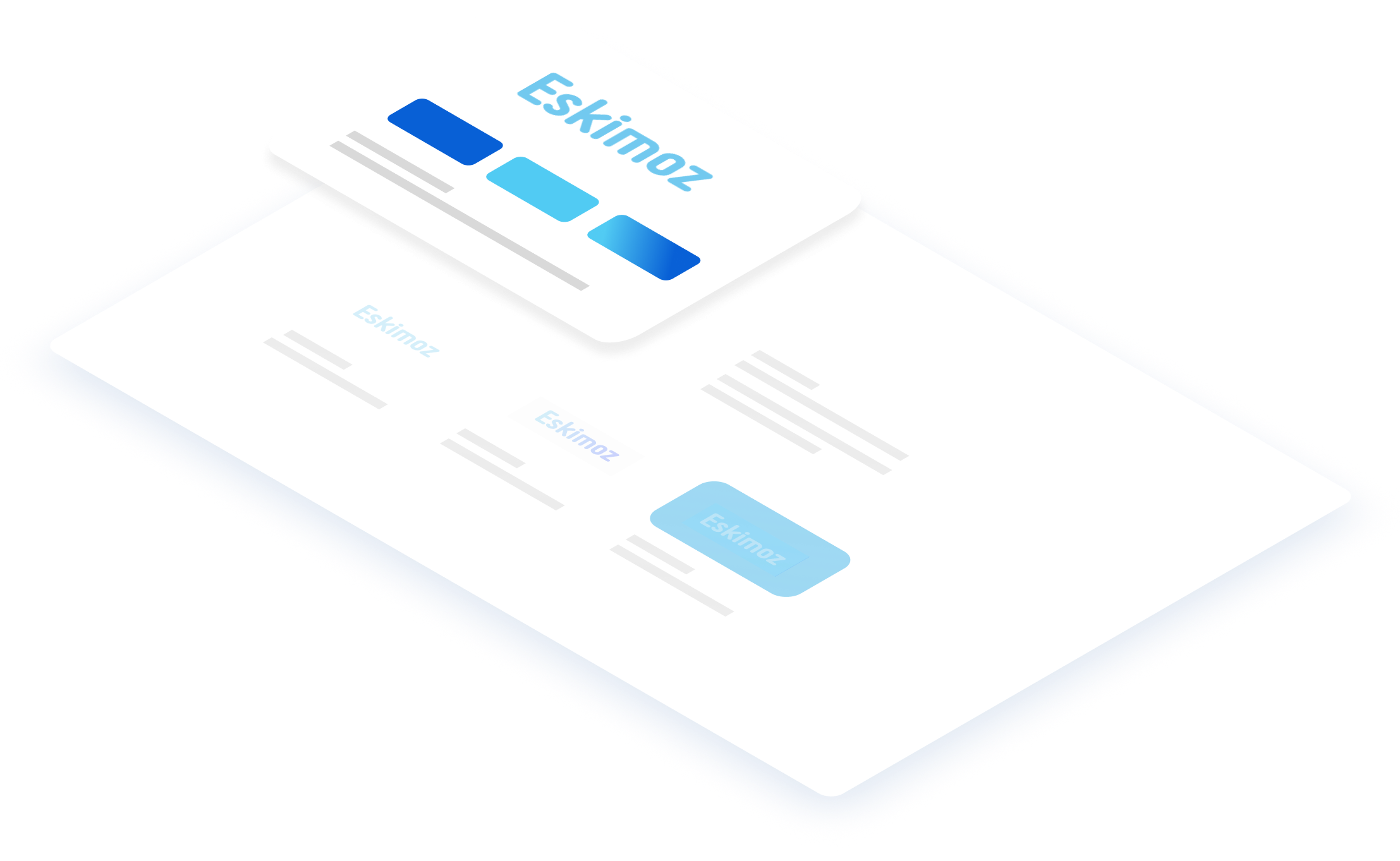
Visual Identity:
A Vital Tool in a Brand’s Communication Strategy
A brand’s visual identity plays a vital role in shaping its communication strategy. So what should it encompass?

Definition, use and objective of a brand’s visual identity
What exactly is a visual identity?
Visual Identity: Definition, Importance, and Examples
A visual identity, also known as a branding guideline, is a comprehensive reference document that summarises the fundamental graphical rules of a company or brand. It encompasses various elements that contribute to its visual identity, including the logo, fonts, colour codes, visual elements, and graphic symbols. It serves as the cornerstone of the communication strategy, ensuring consistency in the visual representation across all channels used to promote the company or brand, such as business cards, letterheads, websites, and marketing materials.
Why is a company’s visual identity so important?
A visual identity aims to unify the different aspects of a brand within a cohesive visual framework. By following this document, no matter how many steps are involved in the production process, the brand’s image remains coherent to all recipients – employees, partners, customers, and the general public. In essence, a company’s visual identity acts as a “guidebook of best practices” for representing the brand effectively. Therefore, this document should be clear and easily understandable to everyone involved.


An important first step:
Defining your brand identity
Before creating your visual identity, it’s essential to define your brand identity: you have to understand who you are before you can effectively communicate it to others! Here’s how to get started.

-
STEP 1
Define your brand’s mission
What is the purpose of your brand? What message do you want to convey? What promise are you making to your customers? What are your goals? These important questions need to be answered to establish your brand’s visual identity guidelines. The visual elements of your brand will be shaped accordingly.
-
STEP 2
Identify your target audience
Who is your target market? Who are your customers and what are their needs? Understanding the identity of your ideal customers is essential in crafting your brand’s visual identity guidelines. Your logo, colour choices, and typography will vary depending on the specific profiles you want to engage with.
-
STEP 3
Create your brand’s personality
Who are you as a brand? Create a list of four or five adjectives that best describe your brand and perfectly capture its essence. For instance, traditional, serious, sophisticated, and reassuring, or trendy, lighthearted, quirky, and original. These characteristics will be translated into tangible elements such as colour schemes and visual components.
-
STEP 4
Reflect your brand’s values
Your brand’s values serve as emotional touchpoints with your target audience. Establish the guiding principles that shape your company and its strategy. Define five to six values that best represent your brand, such as professionalism, closeness, trust, cohesion, respect, audacity, and more. These values will be reflected in your visual identity guidelines through visual elements.
-
STEP 5
Operate through contrast
A valuable approach in developing visual identity guidelines is to consider contrasting elements. This involves selecting adjectives and values that go against your brand’s identity. It helps identify colour schemes and graphic elements that are not aligned with your brand and therefore should not be included in your guidelines. By doing so, you gain a better understanding of the elements that truly define your brand.
Good to know
Visual identity guidelines may evolve over time, such as adopting a new logo, changing colour schemes, or incorporating new visual elements. However, be cautious not to frequently overhaul your visual identity, as it may lead to confusion and undermine customer trust.
How to establish a company’s visual identity
A guide to creating your visual identity

-
Brand logo
Among all the visual elements, the logo is undoubtedly the one that sets a brand apart from others the most, as it’s often the first point of contact for consumers with a brand. A company’s visual identity guidelines should therefore explicitly outline the various uses of the logo across different communication channels and graphic environments (business cards, brochures, website, company vehicles, etc.).
-
Colour palette
The choice of colours determines both the personality and values of a brand; it’s what allows instant recognition. The visual identity guidelines should specify not only the usable colour palette but also the colour codes that apply. These colour codes represent the intended meaning associated with specific colours within the brand’s visual universe. Choose four to five colours (in addition to black and white, commonly used) to maintain clarity, ensuring their consistent use.
-
Typography
The selection of fonts should align with the brand’s mission and values. Typography plays a significant role in communication strategy. Therefore, visual identity guidelines should provide clear instructions on their usage, including the specific fonts to be used, spacing, and character alignment on the page. And remember, these instructions apply not only to physical materials like letterheads and business cards but also to your website and all digital assets.
-
Various visual elements
This section of a company’s visual identity focuses on the rules for using visual elements broadly, such as photos, illustrations, icons, pictograms, and graphics. It should define preferred themes for visuals, tone, and style, as well as preferred placements and dimensions to maintain consistency. These visual elements establish a shared visual symbolism unique to your brand.
-
The hierarchy of visuals
How should visual elements be positioned across various communication platforms? Where should fonts be placed on the page? This section of the guidelines focuses on ensuring the graphic consistency of the brand’s visual identity across both physical and digital mediums. The visual hierarchy helps consumers understand your content and receive the messages you want to convey.
-
Brand presentation
While optional, integrating a brand presentation within the company’s visual identity is highly beneficial, particularly when it’s intended for external partners such as graphic designers and web developers, etc. It allows external stakeholders to grasp the company’s positioning, mission, core values, and key messages, enabling them to align their creative work with the desired visual identity.
Tailoring your visual identity to your business activity
Visual identity encompasses a core set of elements (including the six visual components mentioned earlier) that are applicable to all brands. However, there is also room to include specific modules tailored to your industry or specific communication channels. Is your website a crucial communication tool? Provide additional guidance on digital layout. Are you in the retail sector? Add a dedicated section for product graphics and packaging. Do you primarily communicate through social media? Offer a graphic guide specifically designed for those platforms. Is your document strictly for internal use? Print a physical visual identity guideline to be distributed among all communication stakeholders.

“The logo is the entry point to the brand.”

Examples of the visual identities of some well-known brands
Four examples of a successful visual identity
A visual identity typically revolves around the same visual elements, sometimes accompanied by additional editorial rules (particularly regarding the tone to use in visual content). Naturally, most documents of this nature exhibit similarities. However, it’s intriguing to observe how prominent brands construct their visual identity guidelines: the elements they choose to emphasise, the level of precision they demand from communicators, the best practices they advocate, and more. We’ve handpicked four examples from renowned international brands, providing you with a clear insight into the possibilities achievable with a company’s visual identity.
Our Commitment
-
Expertise
Since 2010, we have worked with over 2000 clients across 90 countries.
-
Passion
We are a team of passionate, industry-focused individuals who are committed to your success.
-
Performance
We’re committed to implementing a data-driven strategy, making a real impact on your bottom line by providing avenues for growth.
Any questions?
A visual identity is a comprehensive document that outlines the rules for using the visual elements of a brand, which are essential to its identity. It serves as a reference for graphic designers and web developers who create content and communication materials incorporating these elements.
The significance of a company’s visual identity lies in ensuring the consistent use of its brand identity. It guarantees that visual elements are used correctly and consistently, regardless of the person or medium involved. By doing so, a brand can establish immediate recognition in all circumstances.
A typical visual identity guideline includes elements such as the logo, colour palette, typography, images and various visuals, visual hierarchy, and brand presentation. However, additional sections can be added as desired based on the industry, brand characteristics, or specific communication mediums.












